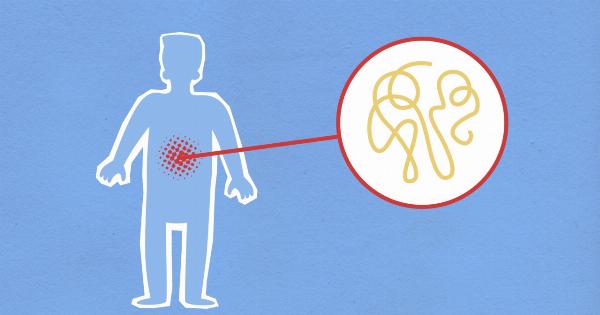Iron is an essential mineral that plays a crucial role in various bodily functions such as oxygen transport, energy production, and DNA synthesis. However, like many other elements, too much iron can be detrimental to our health.
Hemochromatosis is a condition characterized by excessive iron absorption, leading to iron overload in the body. In this article, we will delve into the details of hemochromatosis, its causes, symptoms, diagnosis, and treatment options.
What is Hemochromatosis?
Hemochromatosis is an inherited disorder that causes the body to absorb excessive amounts of iron from the diet. Normally, our bodies have a regulatory mechanism that ensures the amount of iron absorbed matches the body’s requirements.
However, individuals with hemochromatosis absorb iron in excess, leading to a gradual build-up of iron levels in various organs such as the liver, heart, pancreas, and joints.
Causes of Hemochromatosis
Hemochromatosis is primarily caused by genetic mutations that affect the regulation of iron absorption. The most common form of hemochromatosis, known as hereditary hemochromatosis (HHC), is caused by mutations in the HFE gene.
These mutations disrupt the proper functioning of a protein responsible for regulating iron absorption.
Types of Hemochromatosis
There are several types of hemochromatosis, each with its own distinct genetic cause:.
1. Hereditary Hemochromatosis (HHC)
As mentioned earlier, HHC is the most common form of hemochromatosis and is primarily caused by mutations in the HFE gene.
It is an autosomal recessive disorder, which means that an individual has to inherit two mutant copies of the gene (one from each parent) to develop the condition.
2. Juvenile Hemochromatosis
Juvenile hemochromatosis is a rare form of the disorder that typically manifests in adolescence or early adulthood. It is caused by mutations in genes such as HJV, HAMP, and TFR2, which play a role in iron metabolism.
3. Neonatal Hemochromatosis
Neonatal hemochromatosis is an extremely rare and severe form of hemochromatosis that affects newborn babies.
It is believed to be an autoimmune condition where the mother’s immune system targets the liver of the developing fetus, leading to iron overload and liver damage.
Signs and Symptoms of Hemochromatosis
The symptoms of hemochromatosis often take years to develop, and the early stages of the condition may not show any noticeable signs. However, as iron levels increase in the body, the following symptoms may manifest:.
1. Fatigue and Weakness
Excess iron buildup can lead to chronic fatigue and weakness, making it increasingly difficult to carry out daily activities.
2. Joint Pain
Hemochromatosis can cause joint pain and stiffness, resembling symptoms of arthritis. The iron deposits in the joints can lead to inflammation and discomfort.
3. Abdominal Pain
Iron overload can damage the liver, leading to abdominal pain and discomfort. Hepatomegaly, or an enlarged liver, is commonly observed in individuals with hemochromatosis.
4. Diabetes
Hemochromatosis has been associated with an increased risk of developing diabetes. Iron accumulation in the pancreas can impair insulin production and lead to insulin resistance.
Diagnosing Hemochromatosis
Diagnosing hemochromatosis typically involves a combination of medical history analysis, physical examinations, and laboratory tests:.
1. Medical History Analysis
Understanding the patient’s family history and any previous symptoms can provide valuable insights into the likelihood of hemochromatosis.
2. Physical Examination
During a physical examination, the doctor may look for signs such as a bronze or grayish skin color, enlarged liver or spleen, and joint abnormalities.
3. Blood Tests
A series of blood tests are conducted to measure the levels of serum iron, ferritin, transferrin saturation, and liver function. Elevated levels in these tests may suggest hemochromatosis.
4. Genetic Testing
Genetic testing can identify mutations in the genes associated with hemochromatosis, confirming the diagnosis and helping determine the type of hemochromatosis present.
Treatment Options for Hemochromatosis
The primary treatment for hemochromatosis is therapeutic phlebotomy, which involves removing blood from the body to lower iron levels.
The frequency of phlebotomy sessions may vary depending on the severity of iron overload and the patient’s response to treatment. In some cases, patients may require regular phlebotomy for life.
In addition to therapeutic phlebotomy, other treatment options may include:.
1. Iron Chelation Therapy
In cases where phlebotomy is not feasible or sufficient, iron chelation therapy may be considered. This involves taking medication that helps remove excess iron from the body.
2. Dietary Modifications
Following a diet low in iron can help manage iron overload. Avoiding foods rich in iron, such as red meat and iron-fortified products, is recommended.
3. Regular Monitoring
Regular monitoring of iron levels, liver function, and other associated conditions is essential to ensure effective management of hemochromatosis.
Conclusion
Hemochromatosis is a genetic disorder characterized by excessive iron absorption and subsequent iron overload in various organs.
It is crucial to promptly diagnose and manage the condition to prevent complications such as liver cirrhosis, heart problems, and diabetes. Through therapies like therapeutic phlebotomy and dietary modifications, individuals with hemochromatosis can lead a relatively normal and healthy life, provided they receive ongoing medical care and monitoring.































